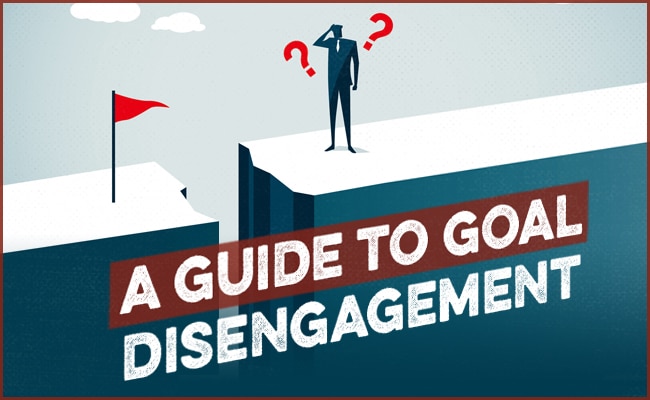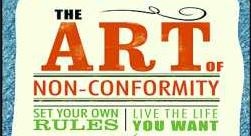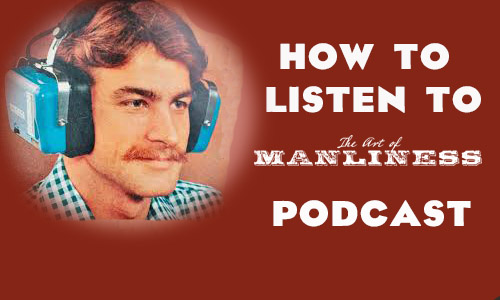
Back in 2015, I started barbell training seriously.
Thanks to some great coaching, I was able to get strong. But more importantly, I discovered a hobby that brought me immense satisfaction.
I love barbell training. I love thinking about programming. I love going down to my garage gym and implementing my plan. I love trying different equipment out. I love tinkering with my nutrition and recovery to help improve my performance. I love everything about it.
Because I love barbell training, it’s never been a slog for me to train. I’ve trained on vacations and holidays, not out of white-knuckle discipline, but simply because I enjoy training so much.
Yes indeed, barbell training has been a source of meaning and identity for me for over eight years.
But back in 2020, right after I hit some of my biggest PRs on the squat and deadlift, I started to experience some injuries from my beloved pastime. Lifting really hard and really heavy for five years — reaching for ever higher numbers — caught up with me.
A shoulder impingement kept me from bench pressing for nearly a year.
Knee pain prevented me from squatting for a year and a half.
A terrible case of tennis elbow in both my arms kept me from bench pressing and shoulder pressing for about five months.
With all of those injuries, I kept up my aim of continuing to train the main powerlifting lifts so that I could eventually participate in competitions again. I worked with my coach, Matt Reynolds, to modify my training so that I could continue to make progress toward my goals and heal up.
2023 started strong, but a couple of months ago, I started experiencing shoulder pain while squatting, shoulder pressing, and bench pressing, and hip pain while squatting. It’s probably a combination of years of heavy training and just getting old. I’m 40 now and not the spry chicken I was eight years ago.
After three years of stymied progress, barbell training started bringing me more distress and frustration than joy and satisfaction. I no longer looked forward to my workouts and felt more peevish in general.
A psychologist named Carsten Wrosch wrote a research paper back in 2003 that explained why I felt so much angst. He also explained what I needed to do to stop feeling that way: give up on my old goal and choose a new one.
You Gotta Know When to Hold ‘Em and Know When to Fold ‘Em
When discussing goals, we typically talk about employing perseverance and persistence, even in the face of adversity and setbacks. “Quitters never win, and winners never quit,” and all that.
While grit is essential to goal achievement, Wrosch argues that an equally important part of successful living is knowing when to give up and disengage from a goal.
We only have so much time and resources to direct toward life projects. If we spend that limited time and resources on goals we can’t achieve, we’re setting ourselves up for massive frustration. We’d be better off redirecting our limited time and resources to a new achievable goal.
In a series of studies, Wrosch and his colleagues found that life satisfaction goes up in individuals who can successfully disengage from unachievable goals and recommit to more achievable ones.
These results shouldn’t be surprising. It doesn’t feel good to continually bang your head against a wall. But Wrosch points out that many people still have a hard time letting go of their goals. When they bump up against the fact that a goal is unreachable, they typically stay committed to the goal while reducing their effort towards achieving it. Consistent commitment, coupled with decreased effort, results in a sense of distress and futility.
Why do people have such a hard time disengaging from goals?
Several factors contribute to it.
Some people just have a compulsive personality.
Uncertainty about whether the goal is achievable or not also feeds into it. If even a small chance of doability seems to remain, some people will keep hanging on.
The sunk-cost fallacy plays a role as well. After you’ve invested so much time and effort into a goal, it’s hard to give up on it because it feels like all the previous investment was a waste.
But the factor that makes it hardest to disengage from a goal is that the goal is part of your identity. Giving up on dreams that mean a lot to you, that contribute to your sense of self, is just plain difficult.
This is what was happening with me and barbell training. Because barbell training was a big part of my identity, I was still committed to my goal of hitting bigger and bigger PRs and getting ready for competitions despite the obstacles I was experiencing. But I was also reducing the effort to make that goal a reality because of the challenges I was encountering. Result: irritation and vexation.
I needed to disengage from my powerlifting goals if I wanted exercise to be a source of joy for me again.
What to Do When Your Goal is No Longer Achievable
Wrosch highlights several ways you can let go of your commitment to a goal. One way is to form a new goal. If becoming a lawyer was a lifetime goal for you, but unforeseen circumstances have made that goal impossible, you can give up on becoming a lawyer and become a barber instead.
But giving up on a commitment to a goal doesn’t mean you have to give up entirely on the goal. You could keep your goal but scale it back a bit. Maybe age and injuries have made hitting an all-time PR in a 5K impossible, but you could set a PR for your 40s. Perhaps you can’t become a millionaire by the time you’re 40, but maybe you’ll get there when you’re 50.
Another way to disengage from a goal in a limited way is to choose an alternate path to a high-order goal. Let’s say your goal was to become a doctor, but you can’t achieve that for whatever reason. Look for a high-order purpose behind that specific goal of becoming a doctor that you can still pursue. Maybe the high-order goal is that you want to help people with their health. There are many ways you can do that without becoming a doctor. You could become a nurse. You could become a trainer or nutritionist. You could work in hospital administration. There’s more than one way to skin the goal cat.
How Do You Know When to Give Up on a Goal?
This is probably the most challenging question to wrestle with. Wrosch admits there’s no definitive answer on when to give up on a goal and commit to a new one. It’s a skill that one has to develop through trial and error.
In our podcast about her book Quit, Annie Duke suggests developing “kill criteria” to help you figure out when to give up on a goal. For example, create a “state and date” contract with yourself that if you don’t achieve a goal within a specific timeframe, you’ll quit. Let’s say you want to become a successful actor. You can set kill criteria like: “I’ll move to Hollywood, and if I’m not making enough as an actor to support myself in five years, I’ll quit pursuing that goal.”
Duke also advises finding a “quitting coach.” It’s a disinterested third party to help you see that continuing to work on your goal is futile, or that you’ve still got the potential to do something great and should stick with it.
For me, it took awhile to finally decide to shift goals with my exercise. Talking to guys who went through the process of changing their fitness goals helped out a lot. Matt used to compete, but thanks to injuries, age, and new responsibilities, he’s had to shift his goals from hitting all-time PRs to training for overall health. Talking to him about his experience helped me out a lot. (For a taste of the conversations we had, listen to this episode of the podcast.)
All of the above tools can be useful. But ultimately, when it comes to knowing when you should quit something, you have to just follow your gut. As Duke advises, you have to weigh the long-term costs with the long-term benefits and see if you come out net positive. Only you can know if you’re getting more out of something than you’re putting in.
Disengaging From Competitive Barbell Training, Committing to Overall Health
With Matt’s help, I’ve developed some new fitness goals as I’ve disengaged from serious, super-heavy barbell training. Instead of giving up on weightlifting completely, I’ve shifted focus to a goal that’s still in the realm of strength training but is more attainable in my current stage of life.
I’m still doing the main barbell movements. I’ve just modified them. I’m squatting . . . but with a safety bar. I’m bench pressing and shoulder pressing . . . but with dumbbells. I can still deadlift heavy, which is great because that’s my favorite lift, so we’ll see if I can still get another PR with that. I’m also doing more bodybuilder-type stuff to work on hypertrophy. I’m having fun working on the aesthetics part of strength training. I don’t plan on looking like a young Arnold, but I am enjoying the process of training to look more jacked. Training is fun again.
Learning how to disengage from a goal that’s brought a lot of satisfaction and meaning in my life for the past eight years has been great practice for the big goal disengagement milestones I’ll likely experience in the coming years as I progress through middle age. What does it mean to be a dad when my kids are grown and out of the house? What will I do with myself when I retire from AoM? I don’t know yet, but at least I’m developing the mental models and skillset to handle those letting-go passages when they arrive.







